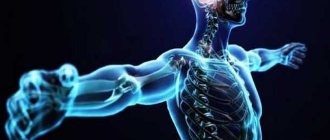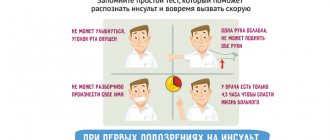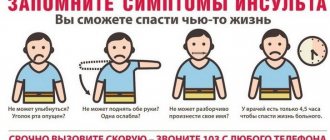Craniotomy is a complex surgical procedure that involves making an artificial hole in the bone to access the brain. Complications may arise during the process, some of which do not depend on the skill of the surgeon and can lead to disability or death of the patient. And even if everything goes well, recovery after craniotomy will be long and will require the patient to strictly comply with the requirements of the attending physician.
Scope of operation
Surgical intervention affecting the brain is so serious that it is carried out in the only case - if not just a person’s health is at risk, but his life. Trepanation is prescribed:
- if a tumor is maturing in the patient’s brain, even if it has nothing to do with oncology, as it grows it will compress parts of the brain, cause monstrous migraines and hallucinations, making normal life almost impossible;
- if cancer develops in the patient’s brain, as the tumor develops, it will not only begin to compress neighboring sections, but also affect them with metastases, which can lead to disability, and subsequently death;
- if an inflammatory infectious process occurs in the patient’s brain, the further it goes, the greater the likelihood of irreversible damage that will lead to the failure of certain parts and, accordingly, body functions;
- if the patient’s skull was damaged due to a traumatic brain injury, trephination can be performed to remove bone fragments, assess the damage caused and, if possible, compensate for it;
- if the patient has experienced a stroke caused by thrombosis, trepanation is performed to remove the blood clot that has plugged the vessel;
- if the patient suffers from thrombosis and the risk of stroke is very high, trepanation is performed to remove blood clots;
- if the patient suffers from brain bleeding caused by a sudden rupture of a vessel, trephination is intended to give the doctor access to the brain and the ability to cope with the bleeding;
- If there is a suspicion of brain cancer and a biopsy is needed, trepanation opens the brain so that tissue samples can be taken from it.
For less serious reasons, trepanation is not performed - as long as this is possible, doctors always try to do without such a serious intervention. Their efforts are especially great if the patient’s chances of surviving the operation without complications are not too high.
Osteoplastic trepanation
Osteoplastic trephination aims not only to open the skull, but also to penetrate inside for various manipulations (removal of hematoma and crush areas after injury, tumor), and its end result should be restoration of the integrity of tissues, including bones. In the case of osteoplastic trepanation, the bone fragment is returned to its place, thus eliminating the formed defect, and a repeat operation is no longer required.
In this type of operation, a burr hole is made where the path to the affected area of the brain will be the shortest. The first step is a horseshoe-shaped incision into the soft tissues of the head. It is important that the base of this flap is at the bottom, since the vessels supplying the skin and underlying tissue run radially from bottom to top, and their integrity must not be compromised to ensure normal blood flow and healing. The width of the base of the flap is about 6-7 cm.
Factors that increase the risk of complications
Craniotomy always carries a certain risk of complications, but there are factors that can significantly increase it, as well as the risk of complications during the recovery period. To somehow compensate for this, it should be taken into account that the following are in danger:
- Elderly people. Worn-out vessels of the heart and brain may not withstand the load of general anesthesia, decreased vitality and metabolic rate can significantly affect the success of the recovery process, concomitant diseases (and in old age they develop even in the healthiest and most successful people) can affect the outcome of the operation.
- Children. The compensatory mechanisms of the child’s body are not yet sufficiently developed, as is his immunity, therefore any surgical intervention poses a significant risk for children. In addition, it is impossible to explain to a small child the need to adhere to the regime after craniotomy; he can harm himself.
- People who have already experienced skull surgery in their lives. Often, after the first operation, adhesions form between the membranes of the brain and its substance, pressing against the part of the bone that was once opened. With repeated intervention there is a high risk of damaging the entire structure.
- People suffering from blood diseases. Hemophilia, anemia - any diseases that affect the rate of blood clotting significantly increase the likelihood of bleeding during surgery and add problems in order to somehow compensate for it.
- People suffering from diabetes. Due to the specific features of this disease, all blood vessels are damaged to one degree or another, which significantly complicates the recovery period.
- People suffering from any immune deficiency syndromes. If they are present, the likelihood of developing an infectious inflammatory process as a result of surgery increases significantly. If possible, doctors avoid prescribing craniotomy to patients in this group - but if it is still necessary, great efforts are required to compensate for the disease.
However, even if a person is completely healthy, the recovery process will be long and there is no way to insure against the development of complications.
Consequences of hematoma
If a cerebral hematoma is left untreated after surgery, the consequences are severe, in half of the cases it ends in death. The greatest danger is represented by dislocation syndrome and damage to the brain stem, infectious process, and relapse.
Possible consequences of a hematoma:
- asthenia;
- impaired coordination of movements;
- impaired motor activity, numbness, paralysis;
- post-traumatic seizures;
- chronic feeling of fatigue;
- swallowing dysfunction;
- urinary incontinence;
- uncontrolled bowel movements;
- dependence of well-being on weather conditions;
- depression;
- sleep disturbance;
- decreased brain activity;
- post-traumatic dementia;
- severe cognitive impairment;
- problems with perception (inability to analyze what is visible);
- speech dysfunction;
- increased irritability;
- neurosis, psychosis, mood swings - from aggression to crying.
Possible complications
There are two options for complications that can develop in a patient who is scheduled for surgery:
- Early. Their occurrence occurs directly during the intervention and often does not even depend on the skill of the surgeon. Among them:
- Bleeding. Since the brain is richly supplied with blood, the loss will be rapid and heavy - which is why surgeons always have blood ready for transfusion.
- Brain damage. At the current level of medical development, they are rare, but can lead to complete failure of the affected area of the brain.
- Edema. This is how the brain reacts to any emergency situation. In case of inaccurate trepanation, the brain matter may be displaced towards the area of intervention, often with pathologies and ruptures.
- Death. It can develop for a variety of reasons, up to simple heart failure due to anesthesia and the excessive stress it causes.
- Late. Their occurrence should be expected after trepanation, during the recovery period. They can be provoked by non-compliance with the doctor’s recommendations, an inaccurate operation and weakness of the body after the intervention. Among them:
- Wound infection. If hygienic standards have not been maintained strictly enough, there is a chance that the edges of the wound will become inflamed and swollen, causing pain to the patient.
- Brain infections. They are very rare, but have dire consequences, causing forgetfulness, irreversible personality changes, convulsions, and failure of certain departments.
- Blood clots and blood stagnation. After surgery, a person usually moves little, so there is a high probability of developing thrombosis, which can lead to complications, including strokes and heart attacks.
- Neurological disorders. The brain tissue may swell, which will disrupt the functioning of its parts. A person may experience problems with everything from speech to coordination—either permanent or temporary, depending on the extent of the damage.
The patient may also feel depressed, have problems sleeping and eating, suffer from speech and coordination problems, and may become irritable or tearful. The main thing is to carefully monitor any suspicious symptoms and, while rehabilitation after craniotomy lasts, carefully report them to your doctor.
There are no unimportant symptoms - if something causes concern in the patient, it needs to be talked about.
Chronic hematoma
Chronic cerebral hematoma is characterized by capsular limitation of hemorrhage. The capsule formation time can be several months or years. The neoplasm contains connective tissue and blood vessels. With new injuries, it can increase in volume (average size - 100 ml). A quarter of people suffering from this form of hematoma do not remember the cause of the injury, as their condition worsens after weeks or months. Symptoms:
- headaches that change when changing position;
- inhibited perception;
- disturbance of functions of consciousness;
- change in personal qualities;
- epileptic seizures;
- brain tumor simulation.
Recovery period in hospital
Even if the operation was completely successful, the patient is left in the hospital for observation and compensation for the consequences of the intervention for a week. During this time:
- On the first day. For the first few hours, while the patient recovers from anesthesia, an oxygen mask remains on him, catheters are connected to his arm, recording the pulse and supplying a nutrient solution to the vein, and a sensor is connected to his head, recording intracranial pressure. As soon as the patient wakes up, the doctor assesses his general condition, how well he has coordination, and whether he is adequate. The mask is removed, and the catheters are removed.
- On the second day. The patient is allowed to get up and get to the toilet independently. The drainage is removed and the patient is allowed to eat on his own if he feels capable of doing so. His face is still covered in bruises and swelling.
- On days three to seven. The patient restores the basic functions of the body, bruises and swelling are slowly disappearing, doctors are closely monitoring his condition. If there are suspicions of complications, they try to stop them at the very beginning.
- On the seventh day. The staples that remain after the trepanation are removed and, having given the patient all the necessary instructions, he is discharged home.
During the entire period of recovery after craniotomy surgery, the patient can receive the following medications:
- painkillers - they help relieve constant pain in a head wound;
- anti-inflammatory - they reduce the likelihood of developing infectious complications to almost a minimum;
- sedatives - they allow the patient to be in a constant calm and even mood, which is useful, because he should not be nervous;
- anticonvulsants and antiemetics - they help relieve the patient from unpleasant side effects;
- steroids - they remove unnecessary water from the body, which leads to a decrease in blood pressure.
In addition, every day the wound is treated to ensure that it does not become inflamed or fester. In addition to medications, the patient is usually prescribed:
- Diet. A weakened body must spend all its energy on recovery, and not on digesting food, therefore in the first week, hospital food is usually as easy as possible to digest. Boiled and pureed, compotes and jelly, some bread. Often a combination of drugs can cause constipation in the patient, and then he is advised to drink more.
- Breathing exercises. With a sedentary lifestyle, the lungs always suffer, so from the very first day the patient is shown a set of exercises that he must perform while lying down - usually these are various inhalations and exhalations.
In the first week, you should not move actively and be nervous. Only rest and medical supervision allow you to recover enough to be discharged.
Recovery period at home
Even after a successful operation, you need to pay a lot of attention to the recovery period - it should last at least six months. You should:
- Give up bad habits - they can cause problems.
- Do not lift heavy objects - loads of more than three kilograms are completely contraindicated.
- Refrain from nervous excitement - if this does not work, you should take a course of calming herbs. If they have no effect, this may be evidence of a developing neurological disease and you should consult a doctor.
- Refrain from bending over - if you need to lift something, it is better to sit down.
- Walk - every day, at a not too fast pace. It is advisable to choose a quiet, peaceful place for walking, away from the bustle of the city. A shady park or small grove will do.
- Stick to a diet - proper nutrition is very important for normal recovery.
If craniotomy is successful, the recovery period allows the patient to return to full life in a relatively short period of time. The main thing is to listen to the doctor, monitor your health and not rush anywhere.
Story
This operation has been known since ancient times. Previously, trepanation was performed on people with inappropriate behavior. Doctors of that time believed that their illness was caused by the influence of evil spirits locked in the patient’s skull, and if a “hole” was drilled in the bone, they would come out. Evidence of the antiquity of the operation has been found in prehistoric human remains from Neolithic times.
Found skull of a prehistoric man
It is clear that earlier ancient people did not know about antiseptics, antibiotics and other methods of fighting infection, so the frequency of purulent complications and subsequent death of the patient was extremely high. Currently, special instruments have been developed for craniotomy, allowing for more efficient manipulation and avoiding unwanted complications.










